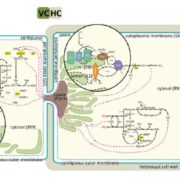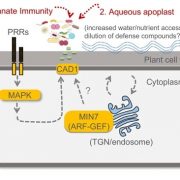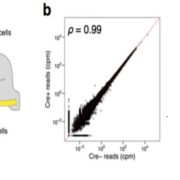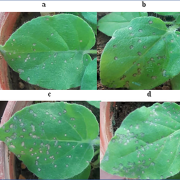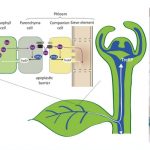Review: Evolution of virulence in rust fungi — multiple solutions to one problem (COPB)
Rust fungi are a diverse group (more than 7800 species) of phytopathogenic fungi that cause 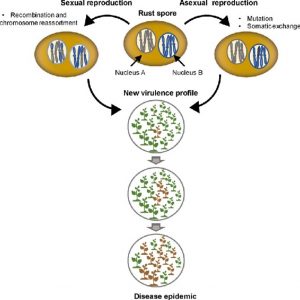 considerable economic loss. (Coincidently, I’m writing on Robigalia, the Roman “anti-rust” festival, which dates from before we understood that microbes, not gods, cause disease). Figurero et al. have written an excellent update on our understanding of virulence in these fungi, which is constantly evolving to evade plant defenses; Flor’s famous gene-for-gene model of plant resistance (R gene) matching fungal gene (Avr effector gene) was developed from rust. How do rust stay so elusive? For one thing, they’re incredible complex, “with up to five distinct spore types corresponding to different life stages and with different ploidy levels,” one of which is dikaryotic, meaning it carries two different haploid nuclei within a single cell. These traits provide the opportunity for great evolutionary plasticity, with novel genetic combinations occurring both sexually and asexually, renders genomic and genetic analyses more complicated and interesting, and provides the fungus with many opportunities to evade plant defenses. (Summary by Mary Williams @PlantTeaching) Curr. Opin. Plant Biol. 10.1016/j.pbi.2020.02.007
considerable economic loss. (Coincidently, I’m writing on Robigalia, the Roman “anti-rust” festival, which dates from before we understood that microbes, not gods, cause disease). Figurero et al. have written an excellent update on our understanding of virulence in these fungi, which is constantly evolving to evade plant defenses; Flor’s famous gene-for-gene model of plant resistance (R gene) matching fungal gene (Avr effector gene) was developed from rust. How do rust stay so elusive? For one thing, they’re incredible complex, “with up to five distinct spore types corresponding to different life stages and with different ploidy levels,” one of which is dikaryotic, meaning it carries two different haploid nuclei within a single cell. These traits provide the opportunity for great evolutionary plasticity, with novel genetic combinations occurring both sexually and asexually, renders genomic and genetic analyses more complicated and interesting, and provides the fungus with many opportunities to evade plant defenses. (Summary by Mary Williams @PlantTeaching) Curr. Opin. Plant Biol. 10.1016/j.pbi.2020.02.007
[altmetric doi=”10.1016/j.pbi.2020.02.007″ details=”right” float=”right”]


